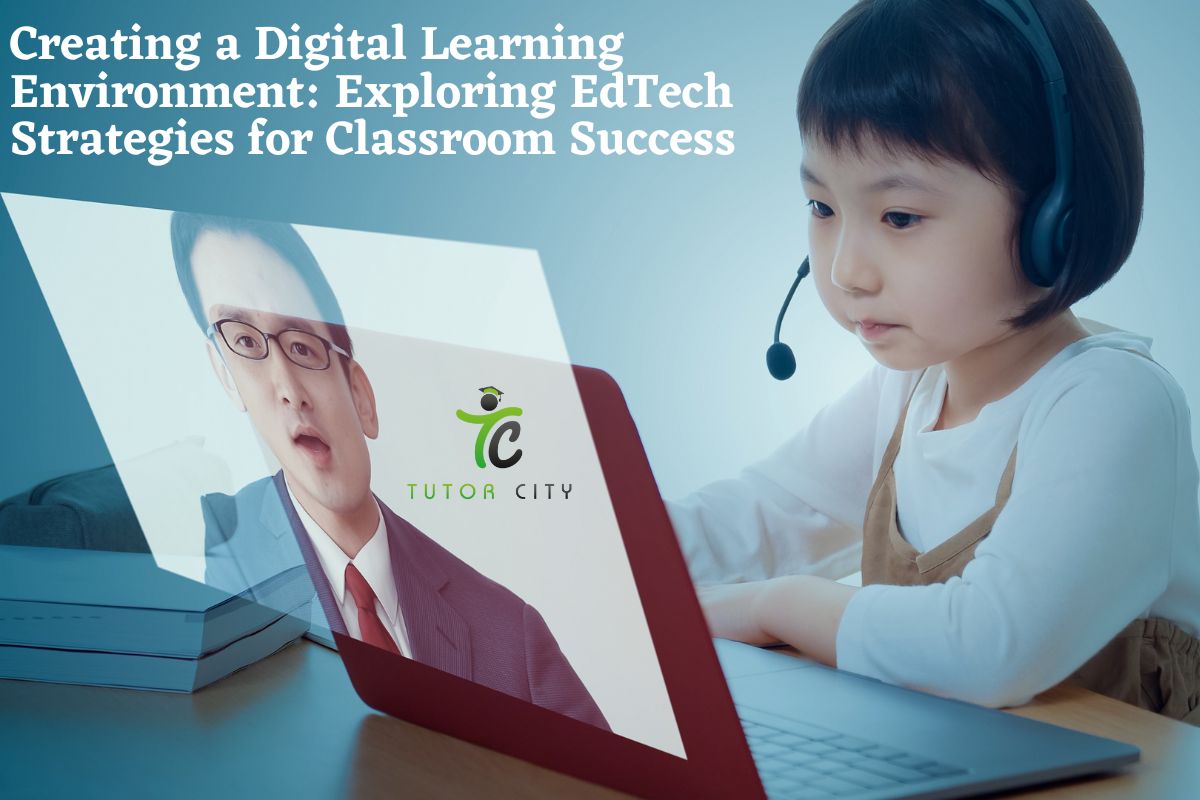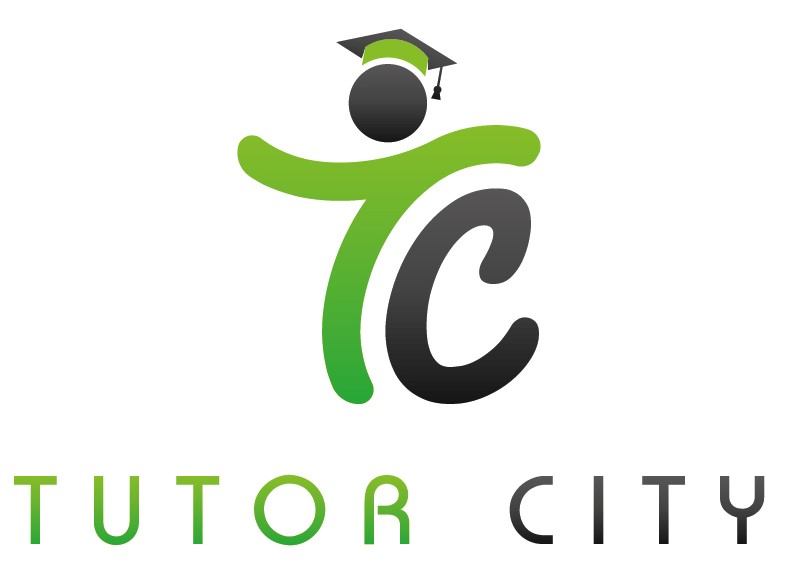
- Published by: Tutor City
- May 20, 2023
- Technology
Creating a Digital Learning Environment: Exploring EdTech Strategies for Classroom Success
The world is changing rapidly, and so is the way we learn. We're living in a digital age, where technology is ingrained in every aspect of our lives, including education. The advent of Educational Technology (EdTech) has transformed traditional teaching methodologies, making learning more engaging, personalized, and effective.
EdTech encompasses a broad range of tools and strategies designed to enhance teaching and learning. From learning management systems and digital textbooks to virtual reality and gamification, these innovations are creating new possibilities for education. However, successfully integrating EdTech into the classroom requires thoughtful planning, strategic implementation, and ongoing assessment. In this article, we explore some EdTech strategies to create a digital learning environment that leads to classroom success.
1. Select Appropriate Technology:
Not all EdTech tools will suit every classroom. It's vital to choose the technology that aligns with your curriculum goals, teaching style, and students' needs. Consider the age and skill level of your students, the learning objectives, and the resources available when selecting an EdTech tool.
2. Train the Trainers:
Equipping teachers with the necessary skills to use EdTech effectively is paramount. Teachers should be offered ongoing professional development opportunities to learn about new technologies and how to integrate them into their teaching. Remember, the technology is only as good as the educator who wields it.
3. Facilitate Active Learning:
EdTech should encourage active learning, where students participate in the learning process rather than passively consume information. Use tools that promote collaboration, problem-solving, and critical thinking. Utilizing interactive touch screen software, coupled with whiteboards, discussion forums, and project-based learning platforms, can actively foster an engaging and dynamic learning environment
4. Personalize Learning:
One of the most powerful features of EdTech is its ability to personalize learning. Adaptive learning platforms can tailor content to each student's learning pace and style, ensuring that all students stay engaged and challenged.
5. Embrace Collaborative Learning:
EdTech can significantly enhance collaborative learning. Tools like shared documents, digital whiteboards, and project management platforms can facilitate teamwork, even in a remote learning environment. Collaboration not only improves learning outcomes but also fosters soft skills like communication, leadership, and conflict resolution. While integrating such tools, remember to guide students on how to work together effectively and respect one another's ideas.
6. Promote Digital Citizenship:
Creating a digital learning environment isn't just about using technology for learning; it's also about teaching students to use technology responsibly. Teach them about online etiquette, privacy, cybersecurity, and the importance of discerning credible sources online.
7. Assess and Adapt:
Regularly assess the impact of the technology on students' learning and engagement. Use this feedback to adapt your strategies as needed. Remember, the goal is not to use technology for its own sake but to enhance learning.
8. Foster Creativity:
EdTech can be a powerful catalyst for creativity. Technologies like 3D printers for classrooms can offer students a hands-on way to bring their ideas to life, stimulating creativity and enhancing understanding. Whether they're designing a science project or creating a piece of art, 3D printers can provide a unique, engaging learning experience.
9. Incorporating Gamification:
Gamification, the application of game-design elements in non-game contexts, can be an effective strategy to boost motivation and engagement in the classroom. Many EdTech tools employ gamification techniques, such as points, leaderboards, and badges, to make learning more enjoyable and competitive. However, while incorporating these elements, ensure they are used as means to promote understanding and not just rewards for completion.
10. Encourage Parental Involvement:
EdTech can also facilitate better home-school communication. Digital platforms can keep parents updated on their child's progress, upcoming assignments, and school events. This enables parents to play a more proactive role in their child's education.
11. Enhance Accessibility:
EdTech can help create a more inclusive classroom by making learning materials more accessible to students with disabilities. Assistive technologies, such as AI text-to-speech tools, can greatly enhance these students' learning experiences.
12. Prioritize Safety:
In the digital learning environment, student safety is paramount. Schools need to ensure they're using secure platforms, teach students about the importance of protecting their personal information, and set guidelines for appropriate online behavior.
13. Use Data Wisely:
EdTech tools often come with analytics that provide valuable insights into student performance and learning styles. These can help teachers tailor their instruction to better meet their students' needs. However, it's important to use this data responsibly and ethically, respecting student privacy.
14. Be Flexible:
Remember, technology is always evolving, and what works today may not work tomorrow. Be prepared to adapt and change as new tools and technologies emerge.
15. Foster a Growth Mindset:
Teach students to view challenges as opportunities for growth. A growth mindset will not only help them adapt to the digital learning environment but also prepare them for the future, where skills such as resilience and adaptability will be highly valued.
16. Support Self-Directed Learning:
EdTech can also nurture self-directed learning. With access to online resources, students have the opportunity to explore topics of interest beyond the standard curriculum, at their own pace. Providing a platform where students can choose what and how they learn fosters a love for learning, independence, and initiative. However, to make this effective, educators must guide students on how to use these resources responsibly and critically.
17. Start Small:
Don't try to transform your classroom overnight. Start with one or two tools, get comfortable with them, and then slowly add more. This gradual approach can make the transition to a digital learning environment less overwhelming for both you and your students.
18. Balance with Traditional Methods:
While integrating technology, remember to balance it with traditional teaching methods. Not all learning should be screen-based, and sometimes the best tool for the job might be a pencil and paper.
In conclusion, creating a digital learning environment is a journey, not a destination. It requires constant exploration, experimentation, and evaluation. And while we embrace the new, we must also value the old.
For instance, 3D printers for classrooms, while an incredible tool for sparking creativity and enhancing learning, are just one piece of the puzzle. They become truly effective when used in conjunction with traditional teaching tools and methods. As educators, we must strive to create a blended learning environment that leverages the strengths of both digital and traditional tools.






